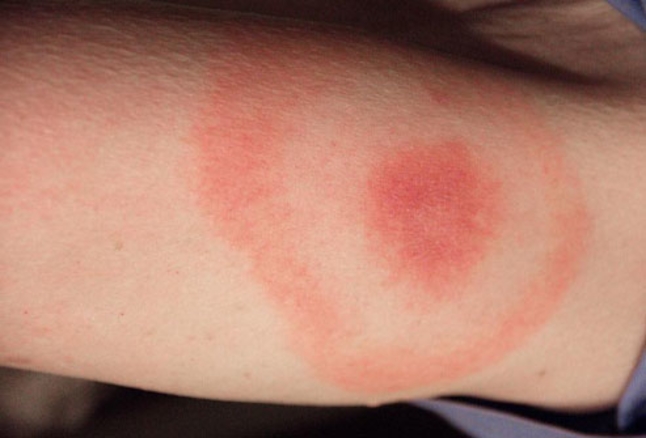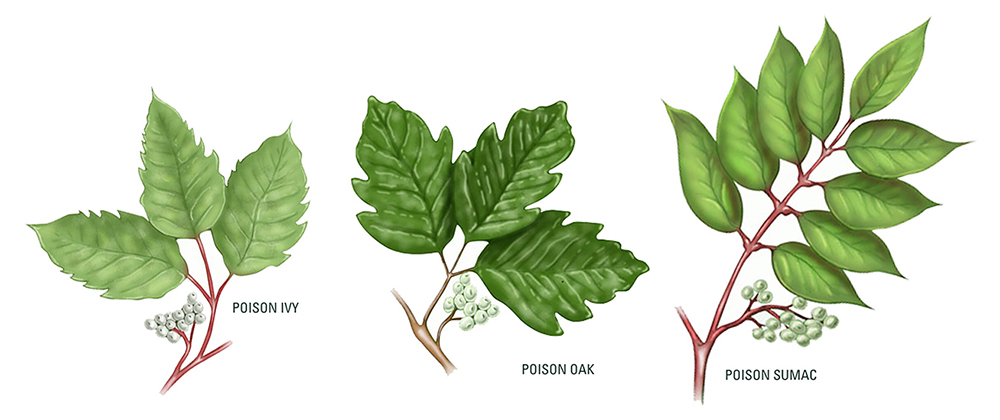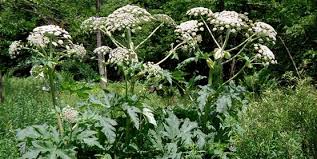
The cold has finally subsided, and we are full-swing into Spring! For many, it marks a time of leaving the confines of home to once again enjoy the warming outdoors. Whether you’re smelling the flowers or spending more time at the dog park, it’s important to understand some critical skills that help maximize your fun and keep you safe.
Ticks
Ticks are small parasitic arachnids (meaning they have 8 legs) that feed off the blood of the host creature to which they attach, most commonly mammals, birds, and sometimes reptiles. They can be found in a wide range of environments throughout the United States and are most prevalent in warmer humid environments. Preferred habitats include wooded and grassy areas as it improves the chances that a suitable host will brush past, allowing the tick to take hold and feed. The tick will drop from its host once it has eaten its fill. Some species of tick can be particularly dangerous due to its ability to spread blood-borne diseases including one of the most widely known, Lyme Disease. Lyme Disease can often be identified by a red ring appearing around the bite location followed by a rash. Lyme Disease typically involves flu-like symptoms and can last even longer. A bite from the Lone Star tick, named for the white spot on its back, can leave you with a meat allergy.
If you find a tick on you, don’t panic, but do focus on removing it as soon as possible. The first thing to look for is whether the head is buried in your skin. If it is not, the can be easily removed and disposed of. If the tick is attached, use fine-tipped tweezers to grasp the tick as close to the surface of the skin as possible. Pull up with steady pressure and remove the tick. Avoid twisting or jerking it as it can cause the mouth parts to become lodged in the skin. Should this happen, remove them with the tweezer or allow the skin to health should you be unable to remove them. Clean the area with alcohol and antibacterial soap as soon as the tick has been removed and disposed of. It’s important not to crush a tick with your fingers. Instead, flush it down the toilet, placing it in alcohol, or using an airtight bag.
The easiest way to avoid ticks is to stay out of their natural habitat, but we’re not advocating you sitting inside all the time (Vitamin D is important). Knowing the habitat will help you be more cautious. Be sure that pets are treated with something to kill ticks, which is commonly sold as a combination package with flea treatment. Repellants containing DEET are a way of protecting yourself in brushy wooded areas. Another recommended tactic to treat outdoor clothing with permethrin, which can withstand several washed before needing to be reapplied. Be sure to thoroughly check yourself after returning home (including pets if you have them). If you are concerned about a tick bite, speak with your primary care provider.

Poisonous Plants
While we don’t expect you to be tasting the different foliage when outside, it is important to recognize several poisonous plant species found in the United States.
Starting with what’s probably the most widely known, poison ivy. Poison ivy grows as a vine or shrub and is easily spotted by its three-leaf pattern. The leaves excrete a sticky oil called urushiol, that causes an itchy, blistering rash. It’s important to not scratch the rash as it can spread the oil to other parts of the body. In some instances, individuals have touched their face or eyes without realizing they had come in contact with poison ivy, which can cause serious complications. Poison oak and poison sumac are similar as they excrete the same oily sap as poison ivy. The sap is present throughout the entire plant and can still be present even after the plant has died. They can grow as a vine or shrub depending on region and climate. Be cautious when burning brush as the smoke can cause serious respiratory complications if inhaled. It’s worth taking the time to learn how to identify these plants against others to better avoid them.

A much less common and relatively new poisonous plant in the U.S. is the giant hogweed. An invasive species, this plant has been reported in 16 states with Virginia currently the southernmost. While giant hogweed has not yet been reported in Georgia, coming into direct contact with this plant can have dire consequences and thus is worth being able to identify. Giant hogweed is federally listed as a noxious weed and can grow to more than 14 feet tall. The stem is hollow and can grow to 4 inches in diameter with purple color splotches. It has a white flower head and the leaves can grow up to 5 feet wide. The sap contains chemical elements that react with sunlight causing what is a called a phototoxic reaction. When the sap contacts skin, it inhibits the skin’s ability to protect itself from sunlight, which in turn leads to severe skin damage when exposed to sunlight. It’s common for severe blisters to form as the skin becomes inflamed. Moisture can worsen the effects. Scars from giant hogweed burns can last years and long-term light sensitivity is common. Getting the sap into your eye can cause blindness. If you come into contact with the sap from giant hogweed, wash the area immediately with soap and cold water and keep the area covered/out of direct sunlight for 48 hours. If a reaction occurs, seek medical attention immediately for treatment.

Allergic Reactions
Allergic reactions vary in severity and cause, but they all stem from the same cause – an improper response from the immune system. Our immune systems are great at defending against harmful invaders but isn’t foolproof. An allergic reaction to something happened when your immune system mistakes something as harmful, thus releasing antibodies to stop it, and causes your cells to release histamines. Histamines are chemicals used by our immune systems to help remove something that’s bothering you by causing blood vessels to expand. We recently covered how to better deal with seasonal allergies, but for some, allergic reactions can be fatal. Foods and insect stings are common causes of severe allergic reactions. The spring can be especially dangerous for those allergic to insect stings as the number of insects rises sharply with the blooming of spring plants. Severe reactions can lead to anaphylaxis. Anaphylaxis causes your body to go into shock, which causes your blood pressure to drop and your airways to close, making breathing very difficult if not impossible. Untreated, anaphylaxis can be fatal. Those who are allergic to stings and certain foods will often carry an epinephrine pen. These compact syringes are designed to be used in emergency situations when epinephrine is needed to stop anaphylaxis. If someone is having an allergic reaction and is unable to communicate it, knowing the signs of anaphylaxis can save their life. Symptoms include:
- Skin reactions, including hives and itching and flushed or pale skin
- Low blood pressure (hypotension)
- Constriction of your airways and a swollen tongue or throat, which can cause wheezing and trouble breathing
- A weak and rapid pulse
- Nausea, vomiting or diarrhea
- Dizziness or fainting
A good safety tip is to identify who has any severe allergies prior to heading outdoors with others. If the affected individual is not able to communicate or deliver epinephrine, you may need to. As with any severe allergic reaction, be sure to visit the emergency room as soon as possible.
Stay Hydrated
While staying hydrated is a concern all year, warmer weather brings the highest probability of becoming dehydrated. Simply put, dehydration occurs when your body does not have enough water. Our bodies are mostly water and require adequate levels to ensure proper function. The most common form of water loss is through bodily functions such as urinating and sweating. Sweating is how our bodies work to cool itself and keep our body temperatures within safe ranges. Transitioning from the winter months into the warm spring months can be especially dangerous for those who are not properly hydrating throughout the day. The allure to spend more time outdoors needs to be met with drinking adequate fluids to prevent dehydration. It’s not uncommon for people to experience mild dehydration at some point in their life, but do not underestimate it as severe dehydration can be fatal.
Signs of mild to moderate dehydration include:
- Thirst
- Dry or sticky mouth
- Not peeing very much
- Dark yellow pee
- Dry, cool skin
- Headache
- Muscle cramps
Signs of severe dehydration include:
- Not peeing or having very dark yellow pee
- Very dry skin
- Feeling dizzy
- Rapid heartbeat
- Rapid breathing
- Sunken eyes
- Sleepiness, lack of energy, confusion or irritability
- Fainting
The best way to manage dehydration is by avoiding it. Drinking plenty of fluids throughout the day can help your body maintain a proper level of hydration. Be sure to hydrate more than normal if you plan on doing any strenuous activities, especially if they are outdoors and in warm environments. If you or someone else is suffering from dehydration, get to a cool area out of direct sunlight, sip water or electrolyte fluid (avoid large gulps), use a damp cloth to help cool the head and neck, seek medical attention if experiencing severe symptoms.
Protect Your Skin
Anyone who’s ever gotten a sunburn knows the power of the sun’s rays. The hot feeling in your skin accompanied by the sharp sting when touched is not something to scoff at, and yet every year people venture out unprotected. While mild sunburns typically fade after a few days, more severe burns can last longer and lead to severe complications. The ultraviolet light present in sunlight rightfully receives most of the attention when it comes to protecting yourself. Ultraviolet light actually penetrates through your skin causing damage to both the outside and what lies beneath. In fact, ultraviolet light alters your DNA, causing your skin to age prematurely. Over time, regular exposure to ultraviolet light can damage the DNA to the point where cancers form. Probably the most widely known type of skin cancer, melanoma has been spent more time in the limelight due to its danger. There are different factors affecting how easily you sunburn: skin tone, the intensity of the sun, and the amount of time exposed. Regardless of skin tone, however, it is always a good idea to protect your skin when heading outdoors. You can do this by wearing long clothing, limiting the time outside, or using sunscreen.
There are many different types of sunscreens available and finding the right one may seem challenging at first. The most important thing to look for is the SPF rating. SPF stands for sun protection factor and indicates how long the sunscreen will protect you. When choosing a sunscreen, be sure to get one that has an SPF rating of at least 30. Apply sunscreen to exposed areas 30 minutes before heading out into the sun and reapply at regular intervals. Some sunscreens are designed to be used in aquatic environments like pools or the ocean and may not need to be reapplied as frequently as others. Aim to match the features of the sunscreen to the activities you intend on doing. If you become sunburned, there are some things you can do to relieve symptoms depending on the severity of the burn. For most mild sunburns, a cold compress, cooling cream or gel, and NSAIDs like ibuprofen can help with the symptoms. More severe burns may require a doctor. Fevers over 102 degrees, chills, extreme pain, or blisters are indicators that you should seek medical attention. Do not go back into direct sunlight with an existing sunburn and be sure to stay properly hydrated. The easiest way to manage sunburns is to avoid them altogether. With modern lightweight clothing and advanced sunscreens, sunburns can become a thing of the past.
